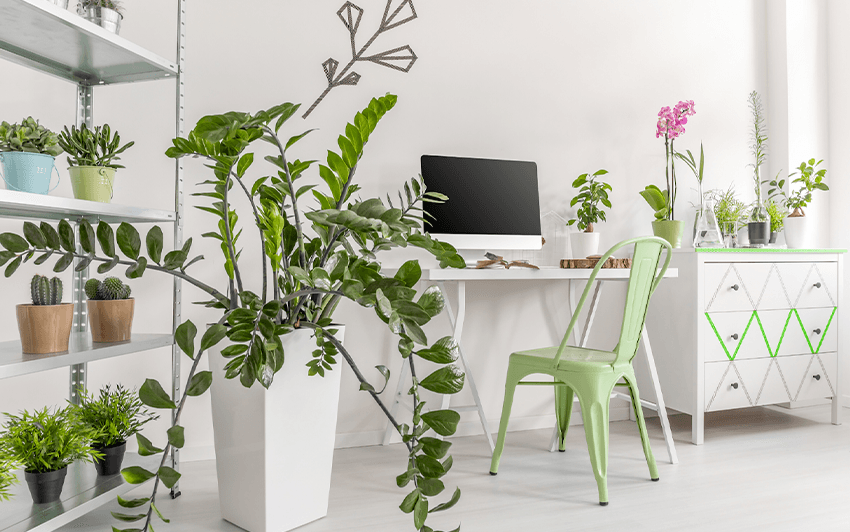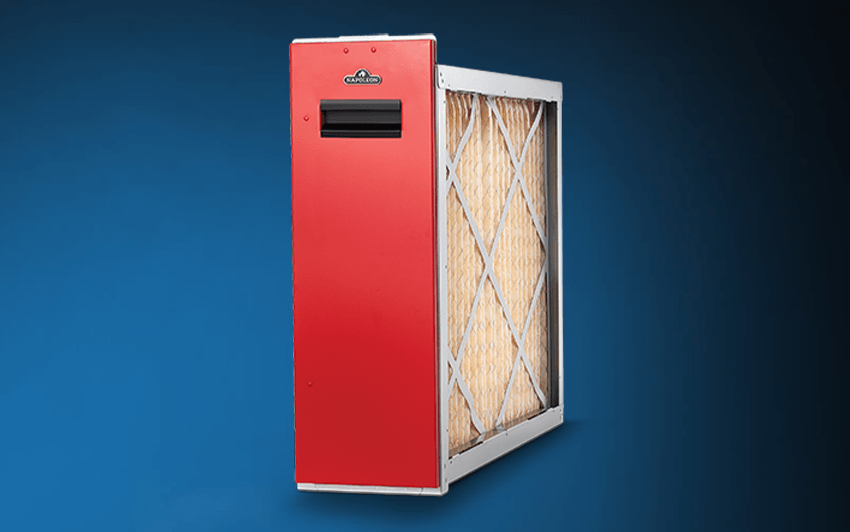
Does Having Indoor Plants Improve Air Quality?
As we wave goodbye to the summer season, we already know we’ll be spending a lot less time outside. Now, it’s vital to ensure that the quality of our indoor air is ideal. Because of this, indoor plants are currently enjoying skyrocketing popularity. This has a lot to do with the idea that they improve air quality in our homes. While it is true that plants have the ability to remove toxins and volatile organic compounds from the spaces they occupy, there’s a lot of information you need to know about this topic to truly ensure that the air quality in your home reaches its most optimal.
If you’ve been thinking about getting indoor plants to improve air quality, this is everything you need to know!
The Benefits of Indoor Plants
Studies show that plants may reduce physiological and psychological stress levels. Being around them can contribute to a feeling of well-being. Just by interacting with plants, you could actually calm the nervous system and lower blood pressure!
This aesthetically pleasing greenery is as beautiful as it is helpful. Plants are pretty much the friends you can always count on. Even just looking at plants is an instant happy pill. If you’ve been looking for ways to boost your concentration skills and productivity, then according to studies, indoor plants may be the answer!
The Best Indoor Plants For Better Air Quality
Building materials, furniture, household cleaning products, and even cooking can all release toxins into the air. These include xylene, benzene, formaldehyde, trichloroethylene, ammonia, and carbon monoxide. Air purifying plants can help fight all of these harmful chemicals.
If you’ve been looking for the best indoor plants for air quality, then these five friendly little plant types can be of help!
|
Plant Type |
Eliminated Toxins |
|---|---|
|
Areca Palms (Chrysalidocarpus lutescens) |
carbon monoxide, trichloroethylene, formaldehyde, xylene, and benzene |
|
Devil’s Ivy (Epipremnum aureum) |
Trichloroethylene, xylene, benzene, and formaldehyde |
|
Chrysanthemums (Chrysanthemum morifolium) |
benzene, xylene, formaldehyde, and ammonia |
|
Peace Lily (Spathiphyllum) |
benzene, carbon monoxide, formaldehyde, trichloroethylene, and xylene |
|
Rubber Plants (Ficus elastica) |
Trichloroethylene, benzene, formaldehyde and xylene |
NASA’s 1989 Study on Indoor Plant Air Purification Benefits
In 1989, NASA carried out a famous experiment wherein they discovered that indoor plants can get rid of toxins in the air such as benzene and formaldehyde (both are cancer-causing compounds).
Their studies revealed that plants with more leaves have increased air-purifying abilities. The leaf surface area directly influences the amount of air that is purified. While there is no doubt that indoor plants can remove harmful chemical toxins from the air, relying on them entirely to improve air quality may not be the answer.
Generally, humans need about 50 liters of oxygen per hour. On average, one leaf of an indoor plant can produce about 5 milliliters of oxygen per hour. You can already imagine just how many plants would be necessary to completely clear up your indoor air.
To significantly improve air quality and reduce volatile organic compounds, you would need an average of 10 plants per square foot. This means that if you live in a 400-square foot apartment, you would need 4,000 plants — and we highly doubt you’d want to turn your house into a forest.
For decades, NASA’s 1989 studies have become the basis for the idea that indoor plants improve air quality. While this is true, it must be noted that these experiments were carried out in a controlled environment and laboratory conditions. Indoor spaces, like homes and offices, are very different.
Considering that plants receive less sunlight indoors impacts the speed of photosynthesis. In addition, homes and offices are not air-tight areas like the spaces used in laboratory experiments. Therefore, it’s not enough to rely on plants alone to clear up the air in these environments.
What You Need to Quickly Improve Air Quality
Opening your doors and windows on a regular basis allows for a quicker turn-over of air. Letting the indoor air out so fresher air can come in is a practice that will help your plants out in the purification process.
To really lift the heavy load off of your plants’ shoulders, and ensure superior air quality, investing in indoor air quality filters is the smartest way to go. Napoleon’s MERV 11 captures 85% of dust and particles. Attaching this appliance to your existing HVAC system is a cost-effective filtration method that’s completely low-maintenance.
If you want to take your air sanitation method to the next level, then Napoleon’s UV-C Technology is the answer. It’s the same technology used in hospitals, designed to keep your home and offices safe. The chemical-free method utilized can safely sterilize the air of contaminants such as bacteria, viruses, molds, and other harmful pathogens!
Give Your Plants Some Back-Up
Plants may not be able to completely improve the air quality in your home on their own, but it’s still a great idea to have these friendly and helpful creatures around. They offer a ton of health benefits and they can eliminate toxins — they just need some backup to complete the mission. This is where air filters come in. The more forces you have fighting off toxins, the better!
Improving air quality quickly and efficiently starts with finding the right indoor air quality products! Napoleon’s superior line of filters is exactly what you need to achieve fresh air in your home. Click here to find a Napoleon dealer closest to you!

